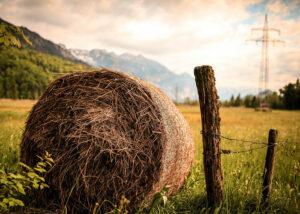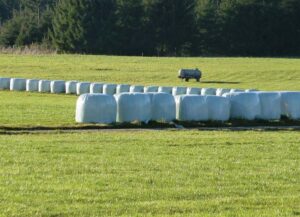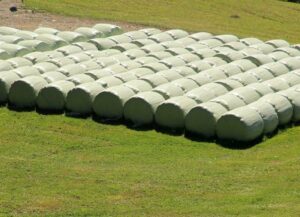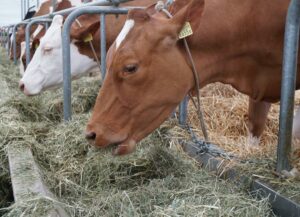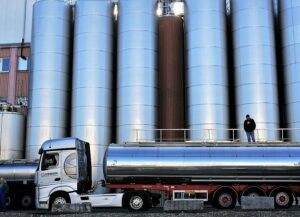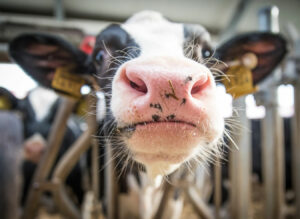Aurora Alaguero & Fernando Diaz
Ryegrass (Lolium perenne) is a perennial grass commonly used as forage for ruminants in temperate and subtropical climates. It is characterized by producing lots of good quality biomass with high nutritional value, with a high concentration of carbohydrates available to livestock.
The nutritional value of plants not only depends on inheritable traits inherent to each plant species, such as improved cultivars or genetic selection, but also their physiological response to environmental stimuli.
A recent study by researchers from different parts of the world showed that the time of the day the grass is cut can influence different parameters of its nutritional value, such as the amount of water-soluble carbohydrates (sugars), total gas production or in vitro DM digestibility.
To carry out this study, the researchers (Wang et al., 2020) designed an experiment in which they evaluated three ryegrass cultivars, “Premium” (reference), and AberAvon and AberMagic (high sugar). All three forages were harvested at three different times of the day, 7:00 AM (morning), 13:30 PM (noon) and 19:00 PM (night), and then tested for in vitro analysis of gas production and nutritional composition.
The results obtained showed that harvest time did not affect the organic matter (OM) content of any of them, but significant differences were observed in some chemical components such as sugars or neutral detergent fiber (NDF; Table 1).
Table 1: Effect of harvest time and cultivar on different chemical constituents
 *Significant differences within each cultivar.
*Significant differences within each cultivar.
Higher nitrogen values were observed in all three cultivars when they were cut in the morning. For NDF, the highest values were observed in the AberAvon cultivar when cut at noon, while AberMagic and Premium had the highest values when cut in the morning.
The sugar contents increased when they were cut at night
In contrast, the sugar contents increased in all three when they were cut at night. Finally, a higher DM digestibility in vitro was observed when they were cut at noon.
On the other hand, gas production for all cultivars increased rapidly between 2 and 17 hours, continued to rise more slowly between 22 and 36 hours, and stabilized from then on. The interaction of cutting time and cultivation affected the total cumulative production of gas only at 2 and 48 hours of incubation and affected the production of CH4 only at 2 hours. Total gas production (TGP) and methane (CH4) was higher in night or noon cuttings, compared to the morning. The values obtained for the most significant fermentation parameters are in Table 2.
Tabla 2. Effects of cutting time and cultivar on fermentation parameters in vitro
 *Significant differences within each cultivar.
*Significant differences within each cultivar.
All parameters of total gas production were significantly lower when cultivars were cut in the morning. In contrast, CH4-related parameters were not affected by cutting time, except for the cultivar AberAvon, where there was a decrease in the values obtained in the pastures that were cut in the morning.
Conclusions
The results obtained in this study reveal interesting information for dairy farmers, to try to improve the utilization of ryegrass varieties by choosing the right time cutting time. Optimizing cutting time could also increase DM digestibility and optimize sugar contents.
It is also worth noting the reduction of CH4 observed in the AberMagic cultivar, which merits additional studies to ratify it.
Reference
Chunmei Wang, Fujiang Hou1, Metha Wanapat, Tianhai Yan, Eun Joong Kim, and Nigel David Scollan. 2020. Assessment of cutting time on nutrient values, in vitro fermentation and methane production among three ryegrass cultivars. Asian-Australasian Journal of Animal Sciences. 33 :1242-1251.
© 2020 Dairy Knowledge Center. All Rights Reserved.



